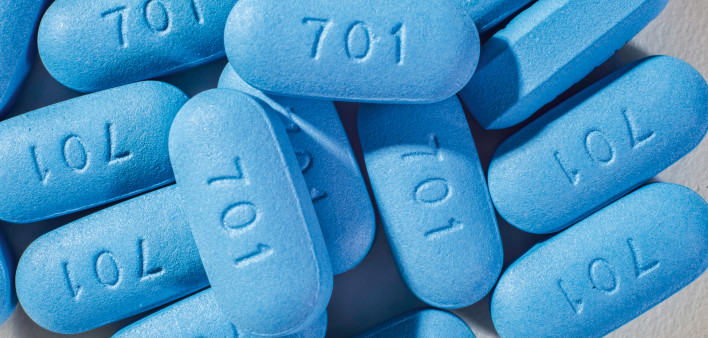A new published study outlines the considerable evidence backing the conclusion that a middle-aged Texas man taking Truvada (tenofovir disoproxil fumarate/emtricitabine) as pre-exposure prophylaxis (PrEP) contracted a strain of HIV resistant to the daily preventive pill, aidsmap reports.
Matthew Spinelli, MD, of the University of California, San Francisco, and his coauthors published their case study regarding a 44-year-old gay man in Clinical Infectious Diseases.
Strong evidence, including the results of tests conducted on samples of blood and hair, indicated that the man had adhered well to the daily Truvada regimen. Testing also found that the virus he acquired bore a number of rare mutations associated with resistance to antiretrovirals (ARVs), including the two drugs in Truvada.
Additionally, Spinelli and his colleagues believe that the man from whom the Texan acquired HIV probably had a high viral load at the time, likely owing to his having been very recently infected. The researchers asserted in their paper that this theoretically high viral load likely aided the virus in establishing a chronic infection in the subject of the case study.
The Texas man began taking Truvada for HIV prevention in December 2017. While on PrEP, he engaged in condomless anal sex with other men and was mostly the insertive partner (the top) but was also sometimes the receptive partner (the bottom). The last time he tested negative for the virus was in April 2019.
Then, in June 2019, he visited the clinic with complaints of a headache, sore throat and chills. He tested positive for HIV through a fourth-generation HIV test, which can detect infections earlier than a standard test. A standard HIV test came back negative.
The man reported he had been fully adherent to his PrEP regimen, so he was told he probably had received a false positive result.
This presumption proved incorrect when blood test results indicated that he had a very high viral load of 3.1 million and a CD4 count of only 195 (500 or above is considered healthy).
Such a high viral load suggested that the man from whom the Texan had acquired the virus also had a high viral load at the time the two had sex, which would have made his HIV very infectious. There is, in fact, a correlation between the viral load of the source sex partner and the viral load during the acute stage of infection of the partner who newly acquires the virus.
The man’s viral load quickly declined 20-fold, to 146,000, according to a subsequent viral load test conducted only weeks later. This pattern of a spike and rapid decline of viral load is indicative of very early HIV infection, during which the body requires time to mount a substantial immune defense that can lower the viral load.
A drug resistance test indicated that the Texas man had a resistance mutation in his HIV known as M184V, which is relatively common and is tied to resistance to emtricitabine, one of the two ARVs in Truvada. As for the tenofovir component of the combination tablet, the man’s virus had a rare mutation that confers resistance to most of the nucleoside/nucleotide reverse transcriptase inhibitor class of HIV drugs, including tenofovir.
The virus also had two very rare mutations to the non-nucleoside reverse transcriptase inhibitor ARV class—in particular rilpivirine, which is sold under the brand name Edurant and is included in various combination tablets.
The fact that the individual had these rare mutations adds weight to the conclusion that the Texan did not himself develop drug-resistant virus while taking PrEP because his virus was resistant to ARVs not included in Truvada.
Dried blood spot testing as well as testing on a hair sample indicated that the man was highly adherent to his Truvada regimen. The dried blood spot testing indicated that his recent drug levels were consistent with taking Truvada seven days a week. As for the hair test, which can look back further to assess adherence over time, it found that during the eight previous weeks, he had been taking five to six doses of Truvada weekly.
Researchers have estimated that men who have sex with men achieve maximum protection against HIV—estimated to be a risk reduction of greater than 99%—so long as they take Truvada at least four times a week.
The study authors noted that only an estimated 1% to 3% of people with HIV whose virus is not suppressed thanks to ARV treatment (about 40% of the U.S. HIV population has a detectable viral load) have virus that is resistant to either emtricitabine or tenofovir. Resistance to both drugs is even rarer.
To read the aidsmap article, click here.
To read the study abstract, click here.







3 Comments
3 Comments